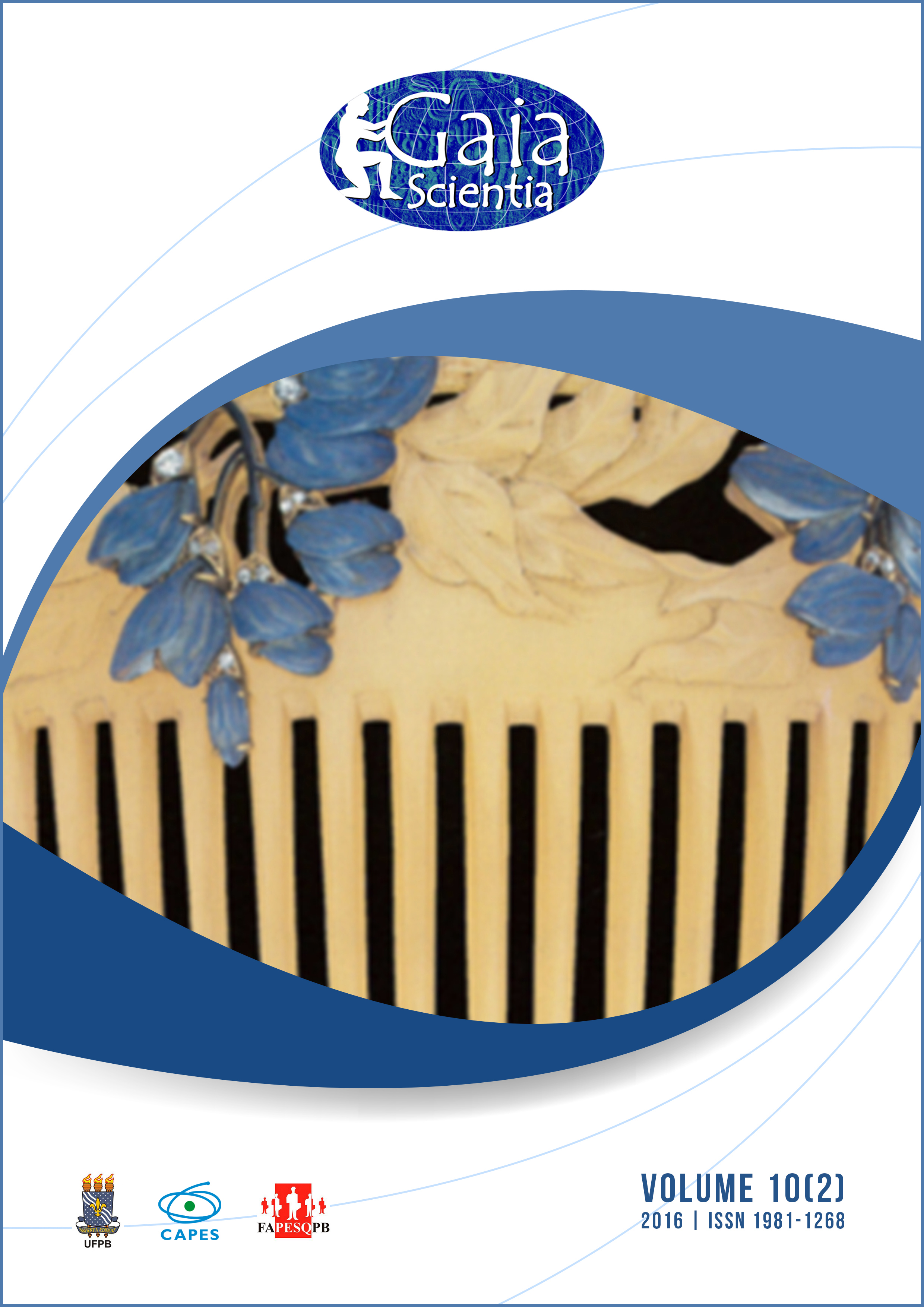Crescimento de Chlorella Vulgaris (chlorophyta unicelular) na presença de compostos fenólicos
Palavras-chave:
Chlorella vulgaris, Extractos de Rosmarinus officinalis, Compostos fenólicos, Estimulação/inibição do crescimento em microalgasResumo
Neste trabalho avaliou-se o efeito de diferentes tipos de extractos da planta de rosmaninho (Rosmarinus officinalis) ricos em compostos fenólicos, no crescimento e na fisiologia da microalga Chlorella vulgaris. Os extractos foram obtidos por infusão aquosa a quente e a frio, esta ultima com dois períodos de extração (5 e 21 dias). Os ensaios foram desenvolvidos em culturas batch com extratos à concentração de 10%, 25% e 30% (v/v). Os resultados mostraram para os extractos a frio que o crescimento da microalga foi afetado apenas com extratos de 21 dias, levando ao aumento da taxa específica de crescimento (μ) e da densidade celular, bem como da concentração de clorofila a (Chl a) e do teor em proteinas, numa relação direta com a concentração de extrato testada. A exposição aos extractos a quente apesar de levar ao aumento de µ e da densidade celular final de C. vulgaris, concomitantemente induziu alguma toxicidade a nível fisiológico, visível pela diminuição dos teores de Chl a e proteínas. Os compostos fenólicos identificados por HPLC, nestes dois tipos de extratos, mostraram diferenças qualitativas e quantitativas. O extrato a frio apresentou essencialmente ácido rosmarínico e quercetina, enquanto que no extrato a quente foram quantificados sete compostos distintos, sendo os mais abundantes os ácidos rosmarínico e gálico. Considerando o perfil de compostos fenólicos encontrado, é possível concluir que o grau de inibição/estimulo do crescimento de C. vulgaris está relacionado com a concentração e composição em compostos fenólicos dos extractos estudados.Downloads
Referências
Al-Khalid T and El-Naas M. 2012. Aerobic biodegradation of phenols: a comprehensive review. Critical Reviews in Environmenatal Science and Techology, 42: 1631-16-90.
Aruoja V Sihtmäe M Dubourguier HC and Kahru A. 2011. Toxicity of 58 substituted anilines and phenols to algae Pseudokirchneriella subcapitata and bacteria Vibrio fischeri: comparison with published data and QSARs. Chemosphere, 84(10):1310-1320.
Belur PD and Pallabhanvi B. 2011. Investigation on production of gallic acid from Terminalia chebula extract using cell-associated tannase of Bacillus massiliensi. In International Conference on Advances in Biotechnology and Pharmaceutical Sciences (ICABPS’2011), p. 222-225.
Boulogne I Petit P Ozier-Lafontaine H Desfontaines L and Loranger-Merciris G. 2012. Insecticidal and antifungal chemicals produced by plants: a review. Environmental Chemistry Letters, 10:. 325–347.
Bradford MM. 1976. A Rapid and Sensitive Method for the Quantitation of Microgram Quantities of Protein Utilizing the Principle of Protein-Dye Binding. Analytical Biochemistry, 72: 248-254.
EI-Sheekh MM Ghareib MM and EL-Souod GWA. 2012. Biodegradation of Phenolic and Polycyclic Aromatic Compounds by Some Algae and Cyanobacteria. J Bioremed Biodegrad., 3:133.
Fernandes C Barros S Galhano V and Geraldes AM. 2014. Searching for Algaecide or Algaestatic Effects of Several Plant Extracts on Phytoplankton: Preliminary Results. British Biotechnology Journal, 4: 1077-1087
Hafidh RR Abdulamir AS Vern LS Bakar F Abas F Jahanshiri F and Sekawi Z. 2011. Inhibition of Growth of Highly Resistant Bacterial and Fungal Pathogens by a Natural Product. Open Microbiol J., 5:96-106.
Herrera-Silveira JÁ and Ramfrez-Ramfrez J. 1996. Effects of natural phenolic material (tannin) on phytoplankton growth. Limnol. Oceanogr., 41(5): 1018-1023.
Jeffrey SW and Humphrey GF. 1975. New spectrophotometric equations for determining chlorophylls a, b, c1, and c2 in higher plants, algae and natural phytoplankton. Biochem. Physiol. Pflanzn. (BPP), 167: 191-194.
Lakhanpal P and Rai DK. 2007. Quercetin: A Versatile Flavonoid. Internet Journal of Medical Update, 2: 22-37.
Laue P Bährs H Chakrabarti S and Steinberg CEW. 2014. Natural xenobiotics to prevent cyanobacterial and algal growth in freshwater: Contrasting efficacy of tannic acid, gallic acid, and gramine. Chemosphere 104:212-220.
Lika K and Papadakis IA. 2009. Modeling the biodegradation of phenolic compounds by microalgae. Journal of Sea Research 62: 135–146
Luna D Rodrigues OM Rada M and Mendez J. 1996. Actividad biológica de flavonoides. In Analis do 4º Simpósio Internacional de Química de Productos Naturales y sus Aplicaciones. p.134-135
Megharaj M Pearson HW and Venkateswarlu K. 1992. Effects of phenolic compounds on growth and metabolic activities of Chlorella vulgaris and Scenedesmus bijugatus isolated from soil. Plant and soil. 140: 25-34.
Miazek K Remacle C, Richel A and Goffin D. 2014. Effect of Lignocellulose Related Compounds on Microalgae Growth and Product Biosynthesis: A Review. Energies 7: 4446-4481.
Michałowicz J and Duda W. 2007. Phenols – Sources and Toxicity. Polish J. of Environ. Stud. 16:347-362
Nakai S Inoue Y and Hosomi M. 2001. Algal growth inhibition effects and inducement modes by plant-producing phenols.Water Research, 35: 1855–1859
Petersen M and Simmonds MSJ. 2003. Molecules of interest: Rosmarinic acid. Phytochemistry, 62: 121-125.
Pietsch K Saul N Chakrabarti S Stürzenbaum SR Menzel R and Steinberg CEW. 2011. Hormetins, antioxidants and prooxidants: defining quercetin-, caffeic acid- and rosmarinic acid-mediated life extension in C. elegans. Biogerontology,12: 329-347.
Pinto G Pollio A Previtera L and Temussi F. 2002. Biodegradation of phenols by microalgae. Biotechnology Letters, 24: 2047-2051.
Rauha JP Remes S Heinonen M Hopia A Kähkönen M Kujal T Pihlaja K Vuorela H and Vuorela P. 2000. Antimicrobial effects of Finnish plant extracts containing flavonoids and other phenolic compoundsInternational. Journal of Food Microbiology 56:3-12.
Shao J Li R Leo JE and Gu JD. 2013. Potential for control of harmful cyanocateriae blooms using biologically derived substances: problems and prospects. Journal of Environmental Management, 125: 149-155.
Stom DI and Roth R. 1981. Some effects of polyphenols on aquatic plants: I. Toxicity of phenols in aquatic plants. Bull. Envinm. Contam. Toxicol., 27: 332-337.
Weyhenmeyer G A Blenckner T and Pettersson K. 1999. Changes of the plankton spring outburst related to the North Atlantic Oscillation. Limnol Oceanogr, 47: 1788–1792.
Whiting DA. 2001. Natural phenolic compounds 1900-2000: a bird’s eye view of a century’s chemistry. Nat. Prod. Rep., 18: 583-606.
Zabka M and Pavela P. 2003. Antifungal efficacy of some natural phenolic compounds against significant pathogenic and toxinogenic filamentous fungi. Chemosphere, 93: 1051–1056.










